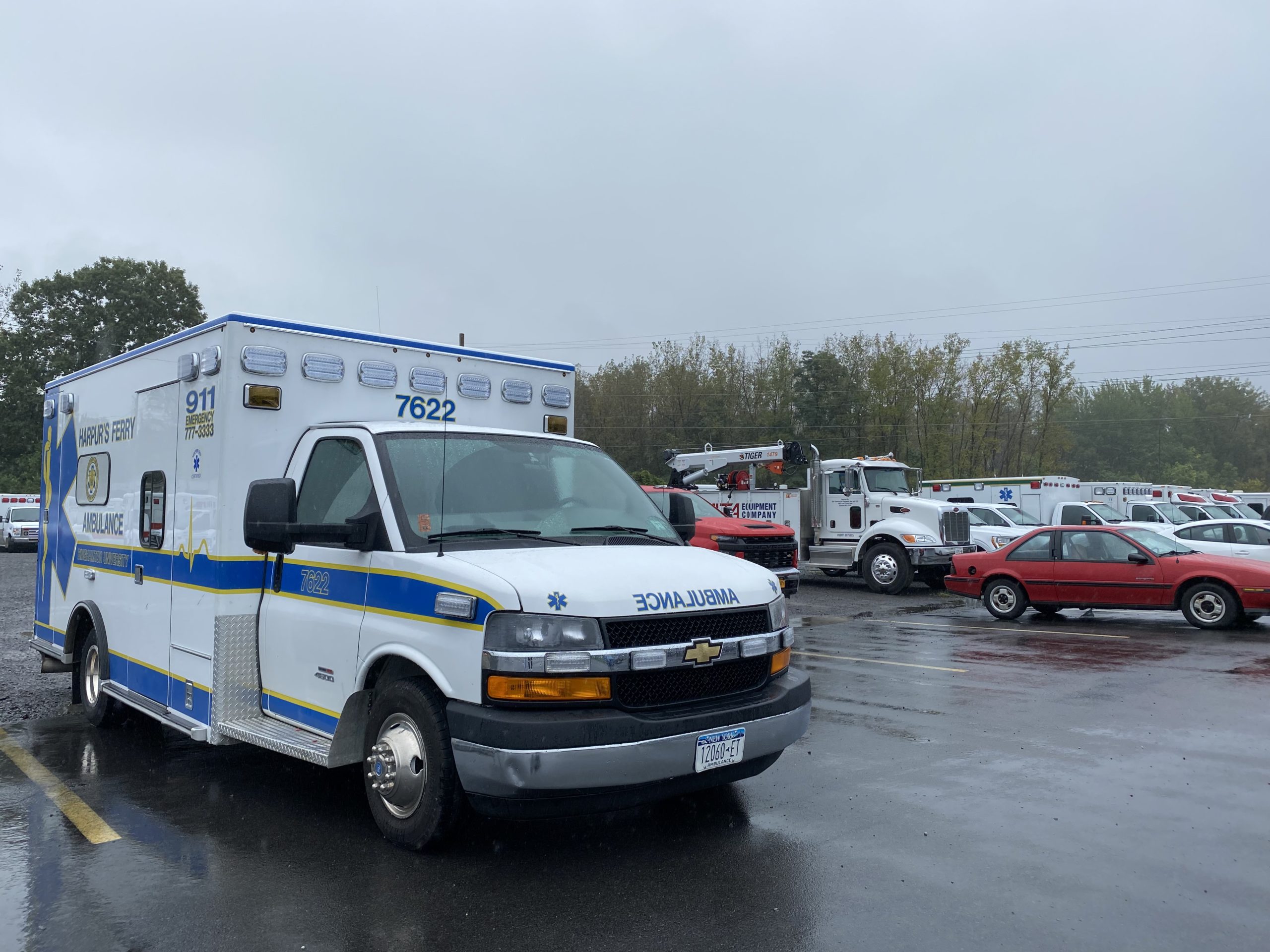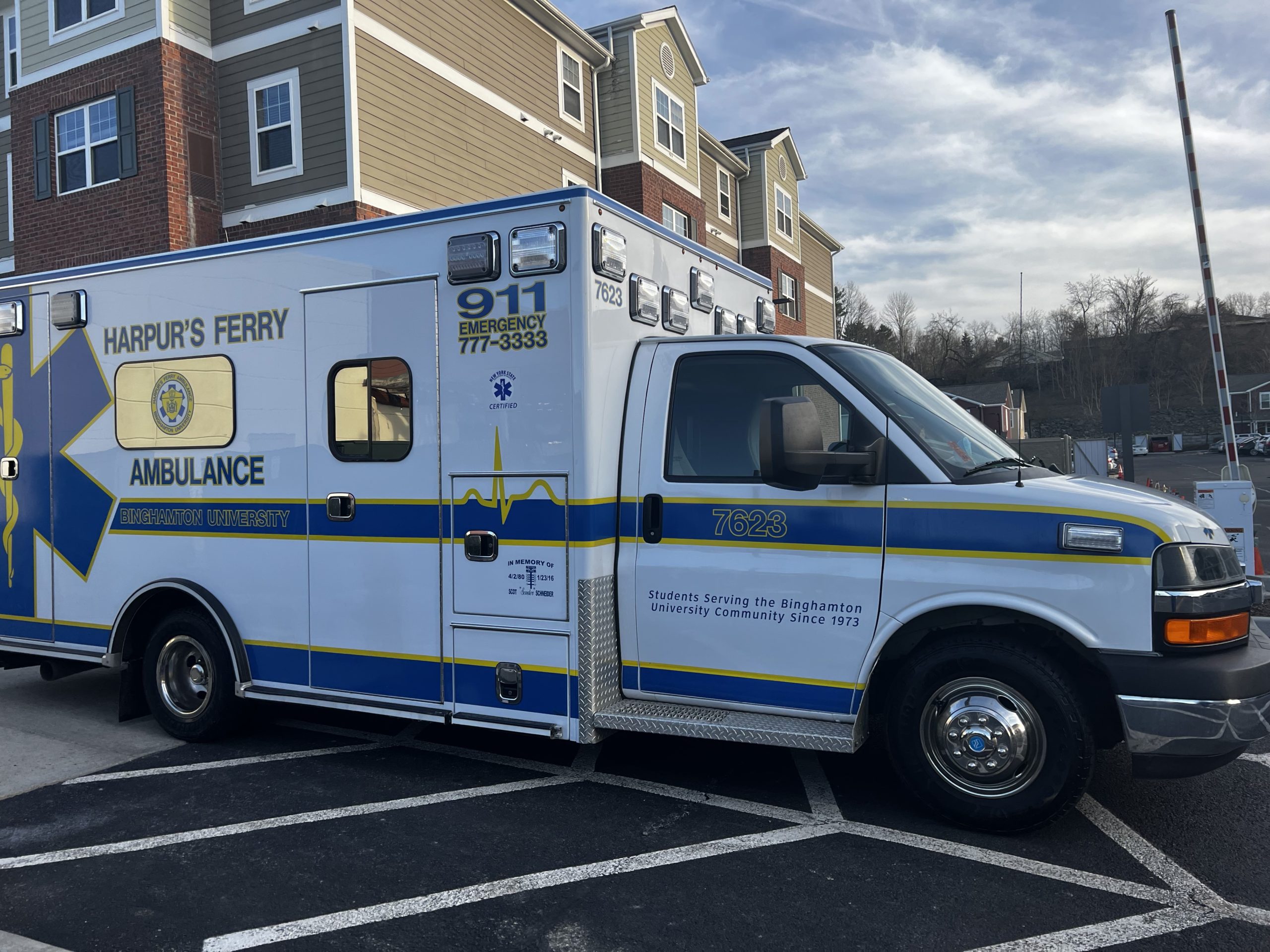Ambulance Quick Facts
-
Each Ambulance is New York State Certified by the DOH
-
All ambulances are equipped with power stretchers
-
Ambulances generally cost in excess of $250,000 which does not include the equipment stocked on the trucks
-
The lifespan of a HF ambulance is about 12 years
-
The trucks are rotated weekly between First Due, Second Due, and Third Due to calls, in order to reduce wear and tear
-
Every crew is required to complete a vehicle check in the beginning of their shift to ensure every vehicle has all required equipment and is working as necessary to respond and treat patients
AGENCY FLEET PHOTOS
Ambulances
Ambulances serve as Harpur’s Ferry’s primary response vehicles and are the exclusive mode of patient transport to local emergency departments. Each unit is fully staffed at the Advanced Life Support (ALS) level, ensuring high-quality prehospital care. Our ambulances are equipped with powered stretchers to enhance patient comfort and reduce provider injury risk, along with state-of-the-art safety features to support secure operations both en route and on scene. The ongoing maintenance, safety, and readiness of our fleet are managed by the Vehicle Maintenance Officer, under the oversight of the Operations Director.

7621
7621 is a 2020 Chevy Demers Type 3 Ambulance. 7621 was put in service in September of 2020. Being that the vehicle was put into service during the height of the Coronavirus pandemic, 7621 was dedicated to all of the lives lost throughout the pandemic.

7622
7622 is a 2012 Chevy 4500 Duramax RoadRescue Type 3. 7622 was put in service January 2013 and is dedicated in honor of the late Major John Pryor, MD, a Harpur’s Ferry Alumnus who died in the line of duty in Mossul, Iraq on December 25, 2008.

7623
7623 is a 2016 Chevy 4500 Duramax RoadRescue. 7623 was placed into service in March of 2016. 7623 was dedicated to Scott Schneider, a member of Vestal Volunteer Emergency Squad who tragically passed away due to a snowmobiling accident.
FLYCARS
“Flycar” is a term used to describe non-transport emergency response medical vehicles. Flycars are a key element of Harpur’s Ferry’s response fleet, primarily used to provide rapid response to the scene of medical emergencies. These vehicles are utilized by on-call officers, supplemental paramedics, and other qualified members to ensure timely arrival of care providers ahead of the transporting ambulance or to supplement the responding ambulance with additional or specialty crew resources. While their main purpose is to expedite response, each flycar is also equipped with Advanced Life Support capabilities, enabling high-level medical care when needed. Outfitted with the latest safety features, they help ensure safe and effective operations in both transit and on scene. Maintenance and readiness are managed by the Vehicle Maintenance Officer under the supervision of the Operations Director.
7651
7652
Special Response Vehicles
Harpur’s Ferry maintains a fleet of specialized response vehicles designed to support operations in challenging environments, during large-scale incidents, and at special events both on and off campus.
7661
Harpur’s Ferry operates a 2022 Polaris RANGER equipped with a Medlite Transport system and Stokes basket, specifically configured for off-road and all-terrain patient extrication. This Utility Task Vehicle (UTV) enables rapid response in areas that are inaccessible to traditional ambulances, such as athletic fields, trails, and remote campus locations. The Medlite system provides secure transport for a patient and a medical attendant, ensuring safe and efficient extrication in difficult terrain. 7661 is equipped with BLS equipment, lights, sirens, and mobile radio. The UTV can carry 3 personnel in the front cab, as well as a provider and patient in the back if necessary.
Flatbed Trailer
To facilitate rapid deployment of the UTV to areas beyond Binghamton University, Harpur’s Ferry utilizes a dedicated flatbed trailer. This trailer allows for the safe and efficient transportation of the Polaris RANGER to mutual aid incidents, regional events, or standby operations in remote locations. 76Trailer was brought into service in Summer 2021.
Special Ops Trailer
The Special Operations Trailer is a key asset for large-scale or prolonged incidents. It is stocked with Mass Casualty Incident (MCI) equipment and is configured to serve as a mobile command post when needed. This trailer supports the coordination of resources during special events, disaster drills, and extended emergency responses, enhancing on-scene command and control capabilities.